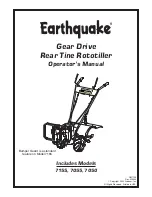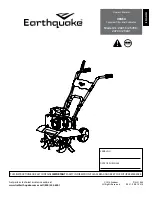
5 Installation
Installation and operation manual
17
SERHQ020~0 SEHVX20~64BAW
Split packaged air-cooled water chiller
4P508019-1C – 2018.04
m
n
c
e
d
b
a
g
h
i
f
j
k
l
a
Weighing scales
b
Refrigerant R410A tank (siphon system)
c
Charge hose
d
Liquid line stop valve
e
Gas line stop valve
f
Stop valve service port
g
Valve B
h
Valve C
i
Valve A
j
Refrigerant charge port
k
Interunit piping
l
Refrigerant piping
m
Field piping
n
Gas flow
NOTICE
In case of maintenance and the system (outdoor unit+field
indoor units) does not contain any refrigerant any
more (e.g., after refrigerant reclaim operation), the unit has
to be charged with its original amount of refrigerant (refer
to the nameplate on the unit).
5.6.5
Checks after charging refrigerant
▪ Are all stop valves open?
▪ Is the amount of refrigerant, that has been added, recorded on the
refrigerant charge label?
NOTICE
Make sure to open all stop valves after (pre-) charging the
refrigerant.
Operating with the stop valves closed will damage the
compressor.
5.6.6
To fix the fluorinated greenhouse gases
label
1
Fill in the label as follows:
b
Contains fluorinated greenhouse gases
2
1
1
1
2
2
kg
tCO
2
eq
GWP × kg
1000
=
=
+
kg
=
kg
=
GWP: XXX
RXXX
a
f
c
d
e
a
If a multilingual fluorinated greenhouse gases label is
delivered with the unit (see accessories), peel off the
applicable language and stick it on top of
a
.
b
Factory refrigerant charge: see unit name plate
c
Additional refrigerant amount charged
d
Total refrigerant charge
e
Greenhouse gas emissions
of the total refrigerant charge
expressed as tonnes CO
2
equivalent
f
GWP = Global warming potential
NOTICE
In Europe, the
greenhouse gas emissions
of the total
refrigerant charge in the system (expressed as tonnes CO
2
equivalent) is used to determine the maintenance intervals.
Follow the applicable legislation.
Formula to calculate the greenhouse gas emissions:
GWP value of the refrigerant × Total refrigerant charge [in
kg] / 1000
2
Fix the label on the inside of the unit near the charging port
(e.g. on the inside of the service cover).
5.7
Connecting the water piping
5.7.1
To connect the water piping
Water connections must be made in accordance with all applicable
legislations and the outlook drawing delivered with the unit,
respecting the water inlet and outlet.
NOTICE
Do NOT use excessive force when connecting the piping.
Deformation of the piping can cause malfunctioning of the
unit.
If dirt gets in the water circuit, problems may occur. Therefore,
always take into account the following when connecting the water
circuit:
▪ Use clean pipes only.
▪ Hold the pipe end downwards when removing burrs.
▪ Cover the pipe end when inserting it through a wall so that no dust
and dirt enter.
▪ When using non-brass metallic piping, make sure to insulate both
materials from each other to prevent galvanic corrosion.
▪ Make sure to provide a proper drain for the pressure relief valve.
▪ Because brass is a soft material, use appropriate tooling for
connecting the water circuit. Inappropriate tooling will cause
damage to the pipes.
▪ For correct operation of the system, a regulating valve must be
installed in the water system. The regulating valve is to be used to
regulate the water flow in the system (field supply).
5.7.2
To fill the water circuit
1
Connect the water supply to the drain and fill valve.
2
Make sure the automatic air purge valve is open (at least 2
turns).
3
Fill with water until the pressure gauge indicates a pressure of
approximately 2.0 bar. Remove air in the circuit as much as
possible using the air purge valves (refer to field setting [E‑04]
in
Summary of Contents for SEHVX20BAW
Page 49: ......
Page 50: ......
Page 51: ......
Page 52: ...4P508019 1C 2018 04 Copyright 2018 Daikin 4P508019 1 C 0000000...
















































